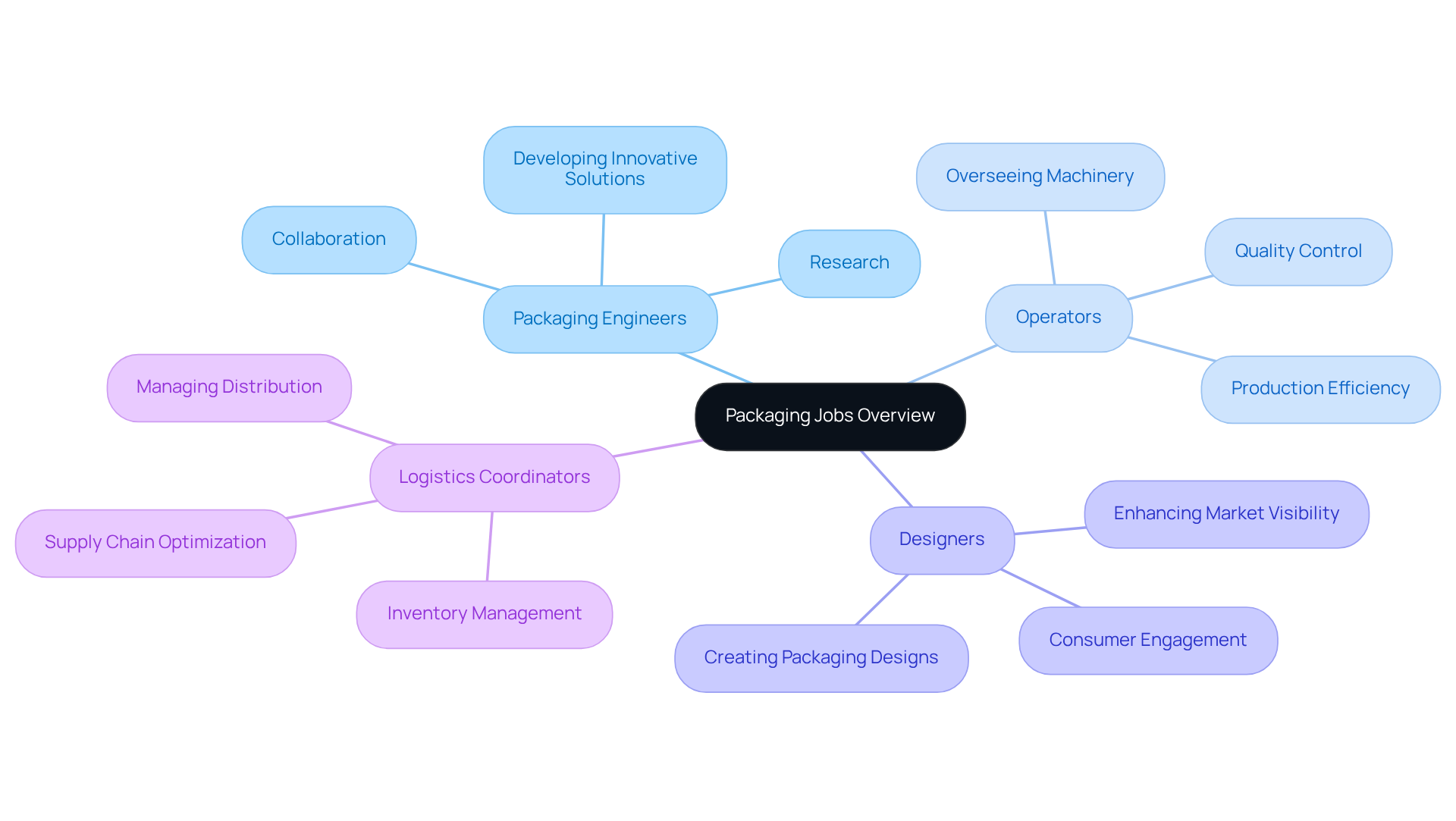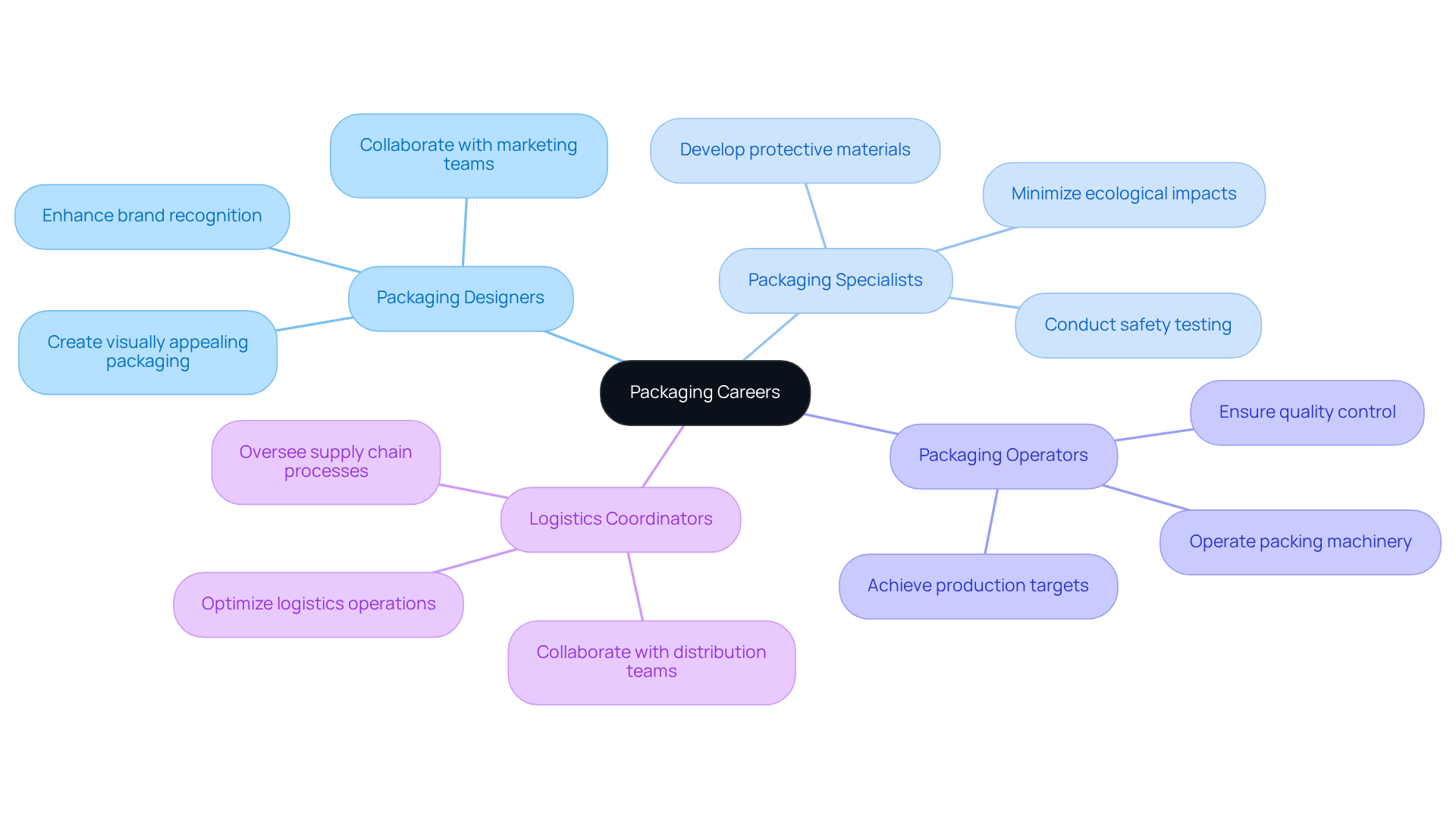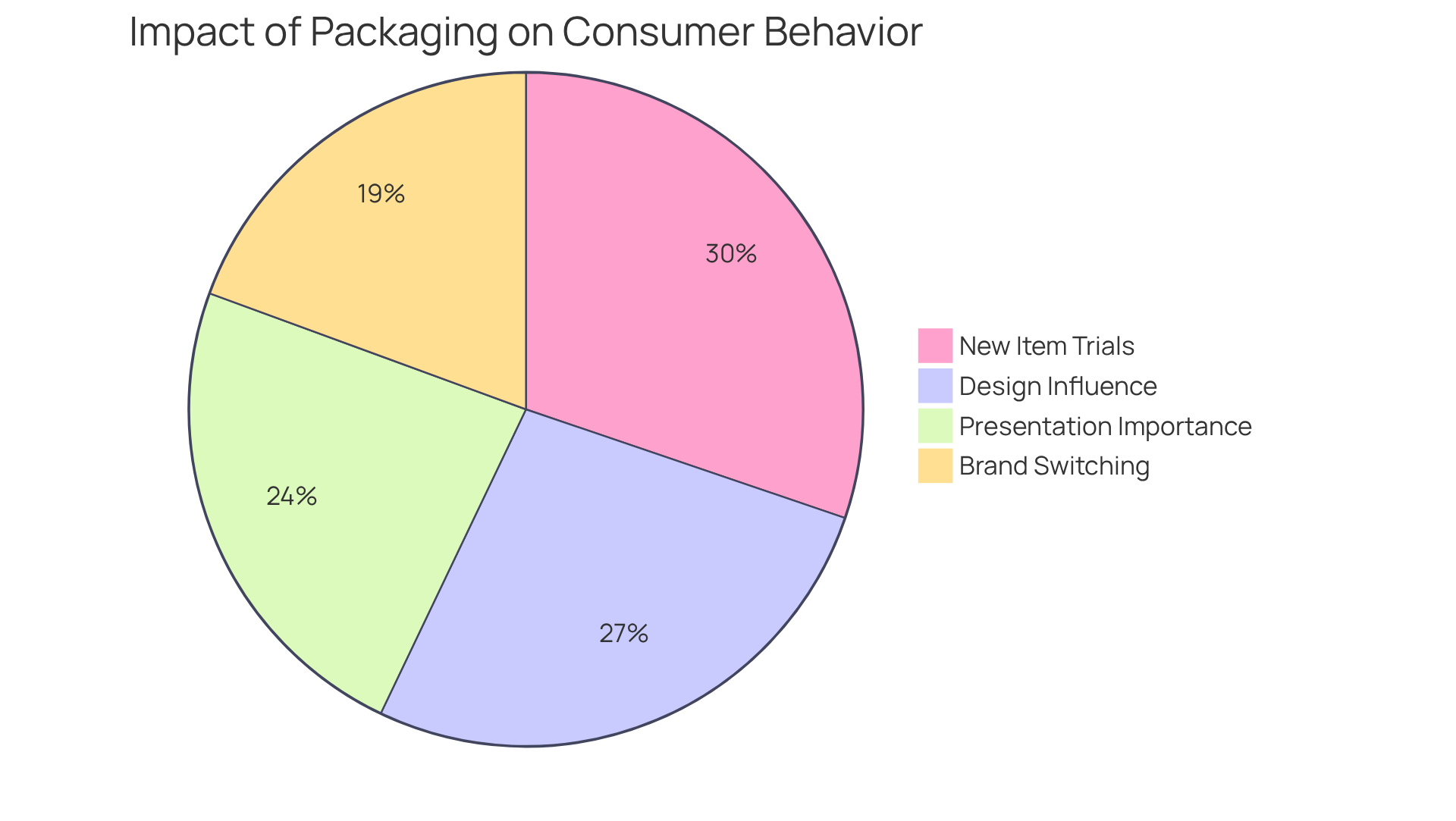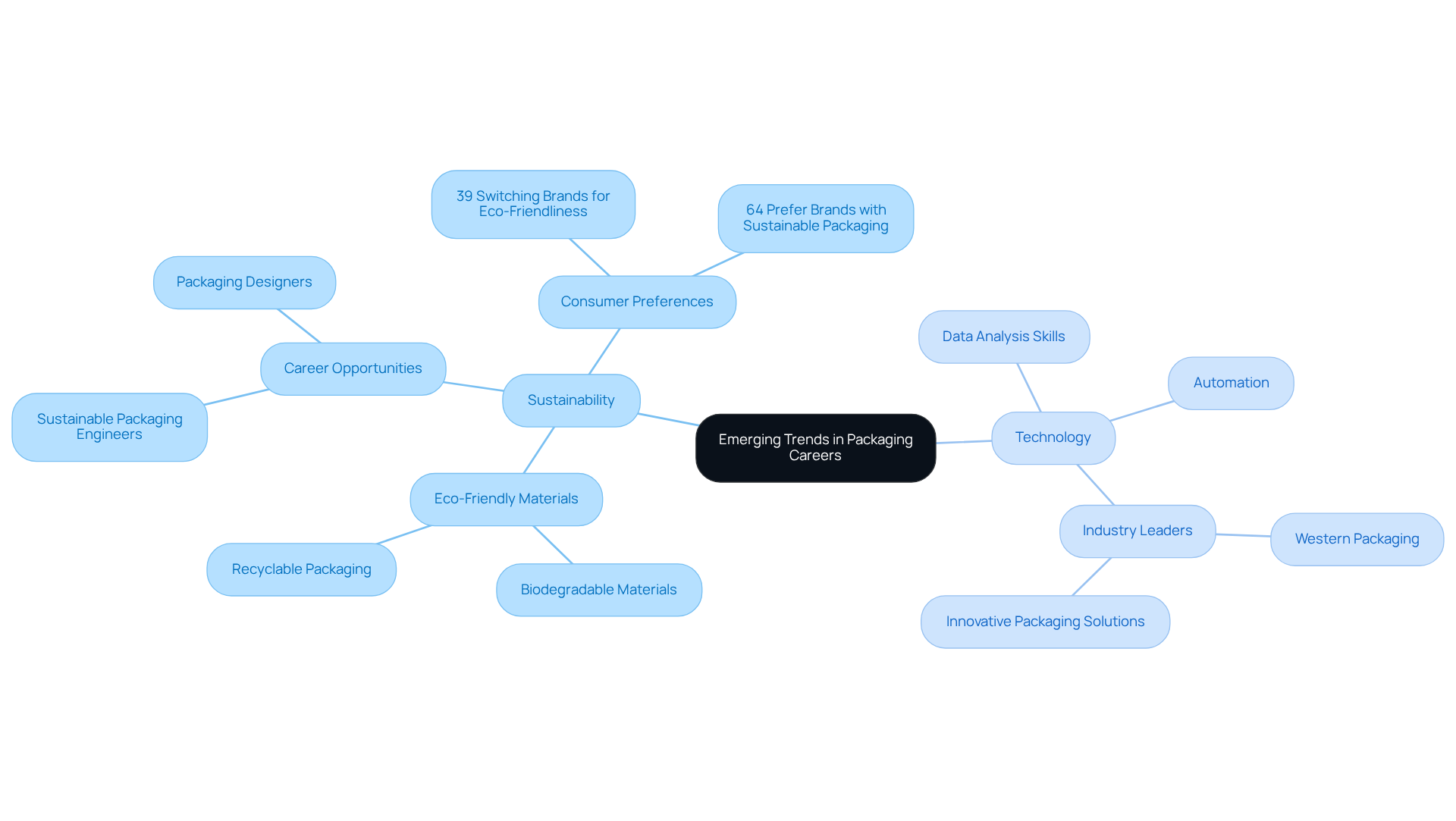Overview
This article delves into the multifaceted roles and career avenues within the packaging industry, underscoring the pivotal role of packaging in both production and marketing. It asserts that diverse positions—such as packaging engineers, designers, and logistics coordinators—are essential for addressing the escalating demand for sustainable and innovative packaging solutions.
As consumer preferences increasingly lean towards eco-friendly products and technologies, the industry must adapt. Understanding these dynamics not only highlights the significance of packaging but also positions professionals to seize emerging opportunities in this evolving landscape.
Introduction
The packaging industry is integral in shaping consumer experiences and driving brand success. Despite this, many remain unaware of the diverse career opportunities it offers. With an increasing focus on sustainability and innovative design, professionals in packaging are in high demand to meet evolving market needs. As the landscape transforms, aspiring individuals must navigate the complexities of these roles and strategically position themselves for success in this competitive field.
Define Packaging Jobs: Overview of Roles and Responsibilities
A packaging job encompasses a diverse array of roles that are critical to the production, design, and distribution of packaged goods. Essential roles include engineers for containers, operators, designers, and logistics coordinators, each playing a vital part in the effectiveness, safety, and attractiveness of items. Packaging engineers are tasked with creating innovative solutions that not only safeguard items but also enhance their market visibility. Their responsibilities frequently involve thorough research and collaboration to develop containers that meet both practical and aesthetic criteria.
Conversely, operators oversee the machinery responsible for filling, sealing, and labeling items, ensuring smooth production processes. Their role is crucial in sustaining operational efficiency and quality control, as they supervise the daily operations of production lines.
Looking ahead to 2025, the demand for skilled professionals in the field of packaging jobs is anticipated to rise, driven by an increasing emphasis on sustainable practices and innovative packaging solutions. By that year, it is projected that 60% of food containers will be recyclable, biodegradable, or reusable, while 25% will incorporate smart technology. This shift underscores the necessity for engineers capable of developing compliant and .
Industry leaders highlight the significance of the packaging job roles. Asif Muhammad, a co-founder and partner in the industry, notes that a dedicated specialist can guide businesses through the complexities of custom solutions, ensuring their needs are met efficiently. Furthermore, another industry leader emphasizes that an effective packaging job is essential for item safety and market attractiveness, reinforcing the critical importance of proficiency in both design and execution.
Case studies illustrate the responsibilities of packaging engineers in action. For instance, Nestlé's recent initiative to introduce recyclable paper containers for its snack items exemplifies how engineers play a crucial role in aligning containers with sustainability objectives. Additionally, a case study on a prominent packaging provider highlights their contribution to maintaining production efficiency, ensuring that lines operate seamlessly and adhere to quality standards. Their ability to innovate and adapt to regulatory changes is vital for companies seeking to enhance their market position while complying with environmental standards.
In conclusion, understanding these roles not only helps individuals align their skills with market demands but also emphasizes the pivotal role that professionals in this field play in shaping the future of product presentation and safety.

Explore Types of Packaging Careers: From Design to Logistics
The packaging job industry presents a diverse array of career opportunities tailored to various skill sets and interests. Key roles include:
- Packaging Designers: Professionals in this field create visually appealing and functional packaging that aligns with brand identity and consumer preferences. Collaborating closely with marketing teams, they ensure that the presentation resonates with target audiences, thereby enhancing brand recognition and shelf appeal.
- Packaging Specialists: Focusing on the technical aspects, these specialists develop materials and designs that protect items while minimizing costs and ecological impacts. They conduct thorough testing to guarantee compliance with safety and regulatory standards, playing a crucial role in maintaining product integrity.
- Packaging Operators: Responsible for the daily operations of packing machinery, these individuals ensure that items are wrapped efficiently and accurately. Their meticulous attention to detail is essential for sustaining quality control and achieving production targets.
- Logistics Coordinators: These professionals oversee the supply chain processes associated with products, ensuring timely and secure delivery. They collaborate closely with warehousing and distribution teams to optimize logistics operations, thereby enhancing overall efficiency.
Looking ahead to 2025, the demand for design specialists and engineers is expected to rise significantly, particularly within the nutraceuticals and goods sectors, which account for a substantial portion of flexible container shipments. As expert Lisa McTigue Pierce notes, "The changing environment of containers necessitates professionals who can combine creativity with technical skills to satisfy consumer needs and regulatory requirements." Each of these roles is integral to the success of operations in the packaging job sector, making it a dynamic and vital area for career advancement. With the in sales in 2022, there are ample opportunities for those seeking to enter this vibrant field. Moreover, the food sector remains the largest market for flexible containers, representing approximately 50% of shipments, further underscoring the significance of these career paths.

The Importance of Packaging in Marketing and Consumer Engagement
The packaging job serves as a vital link between brands and customers, functioning not only as a protective barrier for products but also as a powerful communicator of brand values. A packaging job that involves effective container design can significantly influence purchasing decisions, often acting as the first point of interaction for consumers.
For instance, studies indicate that:
- 72% of American buyers are influenced by design when making purchasing choices.
- 81% have tried a new item solely due to its appealing appearance.
This highlights the importance of innovative packaging jobs that emphasize sustainability, attracting eco-conscious consumers. Moreover, a packaging job featuring clear labeling and visually striking graphics enhances product visibility on shelves, which directly correlates with increased sales. Practical attributes such as ease of opening, storage convenience, and resealable options are also essential in improving the overall customer experience.
Understanding the is crucial for industry professionals in a packaging job, as it is closely linked to brand strategy and customer engagement. An effective packaging job not only captures attention but also fosters brand loyalty, with 63% of shoppers stating that presentation is as important as the brand itself. Additionally, 52% of consumers have switched brands due to a packaging job, underscoring the necessity for thoughtful design choices.
By leveraging these insights, companies can create packaging that resonates with their target audience, ultimately driving sales and enhancing brand visibility.

Emerging Trends in Packaging Careers: Sustainability and Technology
The container industry is undergoing a transformative shift driven by sustainability and technological innovations. With the rise in buyer demand for , design professionals are increasingly tasked with developing sustainable materials and designs that minimize environmental impact. This evolution has catalyzed the emergence of careers, including packaging jobs for engineers focused on sustainable packaging solutions, biodegradable materials, and innovative designs. Notably, 39% of consumers have switched to competitors offering eco-friendly materials, underscoring the competitive advantage that sustainability provides in related careers.
Moreover, technology is significantly reshaping careers within the container field. Automation and intelligent container technologies are becoming indispensable, necessitating that professionals adapt to new tools and processes. Proficiency in data analysis and expertise in advanced machinery have become critical for success in this evolving landscape. For instance, companies like Western Packaging & Distribution are leading the way by integrating technology into their container solutions, thereby enhancing operational efficiency and sustainability. According to industry insights, 67% of consumers deem it essential for containers to be recyclable, highlighting the growing demand for sustainability in container roles.
As the industry continues to evolve, staying informed about these trends will empower individuals to position themselves as valuable contributors. Embracing both sustainability and technological advancements not only enhances career prospects in a packaging job but also fosters a more sustainable future. Furthermore, industry leaders stress the necessity of adapting to these changes, as they are vital for long-term success in the field.

Conclusion
Understanding the multifaceted nature of packaging jobs reveals their critical importance across various industries. As the demand for skilled professionals continues to grow—particularly in light of sustainability and technological advancements—these roles are becoming increasingly integral to the success of businesses. Each position, from packaging engineers to logistics coordinators, contributes uniquely to ensuring that products are not only safe and compliant but also appealing to consumers.
Throughout this article, key insights have highlighted the diverse responsibilities within the packaging sector. The innovative designs of packaging engineers, the operational excellence of packaging operators, and the strategic oversight of logistics coordinators are all essential components of this field. Furthermore, the emphasis on sustainability and the integration of technology are reshaping career opportunities, making it essential for professionals to stay informed and adaptable in this evolving landscape.
The packaging industry stands at a pivotal moment where the intersection of creativity, sustainability, and technology presents both challenges and opportunities. As the market shifts towards more eco-friendly solutions, aspiring professionals are encouraged to align their skills with these emerging trends. By embracing innovation and understanding the significance of packaging in marketing and consumer engagement, individuals can position themselves for rewarding careers that not only meet market demands but also contribute to a more sustainable future.
Frequently Asked Questions
What is a packaging job?
A packaging job encompasses various roles critical to the production, design, and distribution of packaged goods, including packaging engineers, operators, designers, and logistics coordinators.
What are the responsibilities of packaging engineers?
Packaging engineers create innovative solutions that safeguard items and enhance market visibility. Their responsibilities include conducting thorough research and collaborating to develop containers that meet practical and aesthetic criteria.
What do operators do in packaging jobs?
Operators oversee the machinery responsible for filling, sealing, and labeling items, ensuring smooth production processes and maintaining operational efficiency and quality control on production lines.
What is the projected demand for packaging professionals by 2025?
The demand for skilled professionals in packaging jobs is expected to rise due to an increasing emphasis on sustainable practices and innovative packaging solutions. By 2025, it is projected that 60% of food containers will be recyclable, biodegradable, or reusable, and 25% will incorporate smart technology.
Why are packaging job roles significant according to industry leaders?
Industry leaders emphasize that specialized packaging professionals can guide businesses through the complexities of custom solutions, ensuring efficiency in meeting their needs. Effective packaging is essential for item safety and market attractiveness.
Can you provide an example of packaging engineers' responsibilities?
An example is Nestlé's initiative to introduce recyclable paper containers for its snack items, demonstrating how packaging engineers align containers with sustainability objectives.
How do packaging providers contribute to production efficiency?
Packaging providers maintain production efficiency by ensuring that production lines operate seamlessly and adhere to quality standards, while also innovating and adapting to regulatory changes to enhance market position and comply with environmental standards.
What is the importance of understanding packaging job roles?
Understanding packaging job roles helps individuals align their skills with market demands and emphasizes the critical role professionals play in shaping the future of product presentation and safety.




